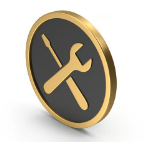Troubleshooting hardware issues involves systematically identifying and resolving problems with your computer’s physical components. Here’s a step-by-step guide to help you troubleshoot hardware problems:
1. Perform Basic Checks
- Power Supply: Ensure that your computer is plugged in, and check the power outlet and power supply unit (if applicable) for functionality.
- Connections: Check all cables and connections (power, display, peripherals) to ensure they are securely connected.
2. Identify the Problem
- Listen for Beeping: If your computer has a POST (Power-On Self-Test) beep code, listen for any beeping sounds when powering on, as these can indicate hardware issues.
- Check Device Behavior: Note any unusual behavior, such as error messages, abnormal noises (clicking/humming), or failure to boot.
3. Use Device Manager (Windows)
- Check for Errors: Open Device Manager to see if there are any devices with warning symbols (yellow triangles). Right-click and check properties for issues and solutions.
4. Run Built-in Diagnostics
- Use Built-in Tools: Many laptops and desktops come with built-in hardware diagnostic tools. Access these by pressing specific keys (like F12 or ESC) during boot-up.
- Manufacturer Diagnostics: Check your manufacturer’s website for specific diagnostic tools or utilities to test hardware components.
5. Test RAM (Memory)
- Reseat RAM: Power down your computer, remove the RAM modules, and reseat them in their slots. This can resolve issues related to loose connections.
- Use Memory Diagnostic Tools: Use tools like Windows Memory Diagnostic or MemTest86 to test the RAM for errors.
6. Check Hard Drive Health
- Listen for Noises: Unusual sounds from the hard drive can indicate problems. Backup your data immediately if you suspect failure.
- Run Diagnostics: Use tools like CHKDSK (Windows) or Disk Utility (macOS) to check the hard drive for errors.
7. Inspect Graphics Card
- Reseat the Graphics Card: Ensure it is securely seated in its slot. If you have onboard graphics, remove the dedicated GPU to see if that resolves issues.
- Check for Overheating: Make sure fans are working and not obstructed by dust. Overheating can cause performance issues.
8. Test Peripherals
- Isolate Peripherals: Disconnect all external devices (mouse, keyboard, printers) and see if the computer functions without them.
- Try Different Ports: If a peripheral isn’t working, try plugging it into a different port or using a different cable.
9. Inspect Cooling Systems
- Overheating Issues: Check that all fans are operational and that heatsinks are not clogged with dust.
- Clean Components: If necessary, clean dust and debris from the inside of your case using compressed air.
10. Check System Logs
- Event Viewer (Windows): Look for critical errors in the Event Viewer that might indicate specific hardware failures.
- System Profiler (Mac): Use the System Information application to check for logs related to hardware diagnostics.
11. Update Drivers and BIOS
- Update Drivers: Ensure that all hardware drivers are up to date, as outdated drivers can cause conflicts and malfunctions.
- Check BIOS Settings: Access the BIOS and ensure that all hardware components are recognized and configured correctly.
12. Seek Professional Help
- Consult Technicians: If you are unable to identify or resolve the issue, consider seeking assistance from a professional technician to diagnose and repair hardware problems.
By following these steps, you can effectively troubleshoot and potentially resolve hardware issues, ensuring that your computer or device operates correctly.
